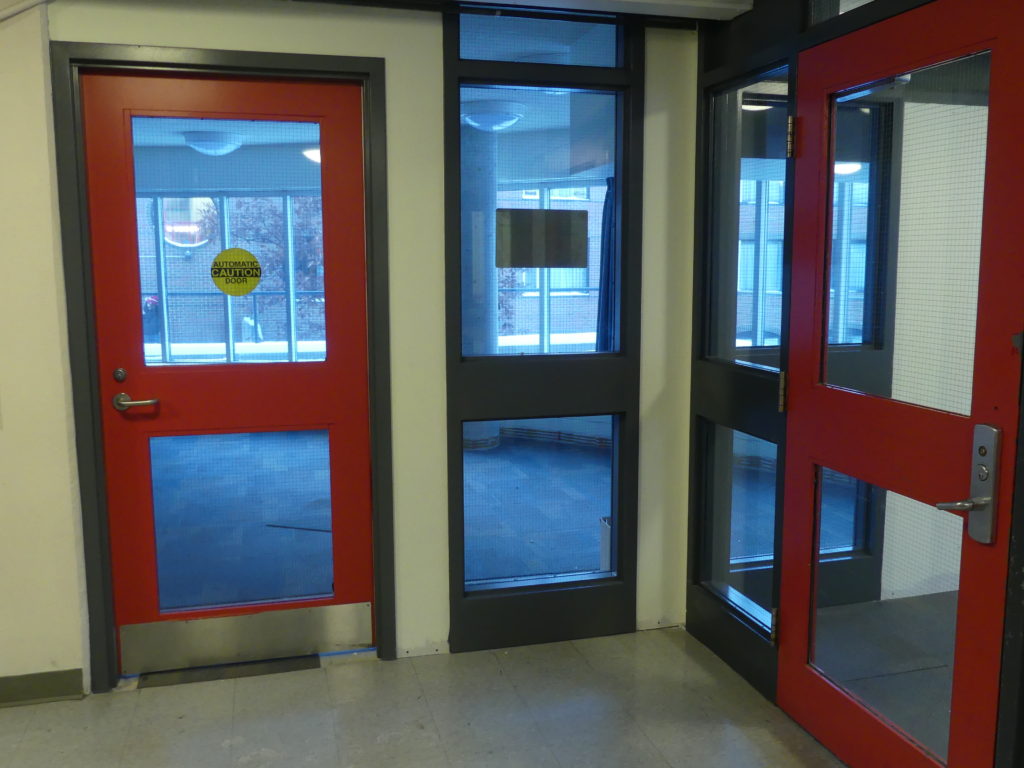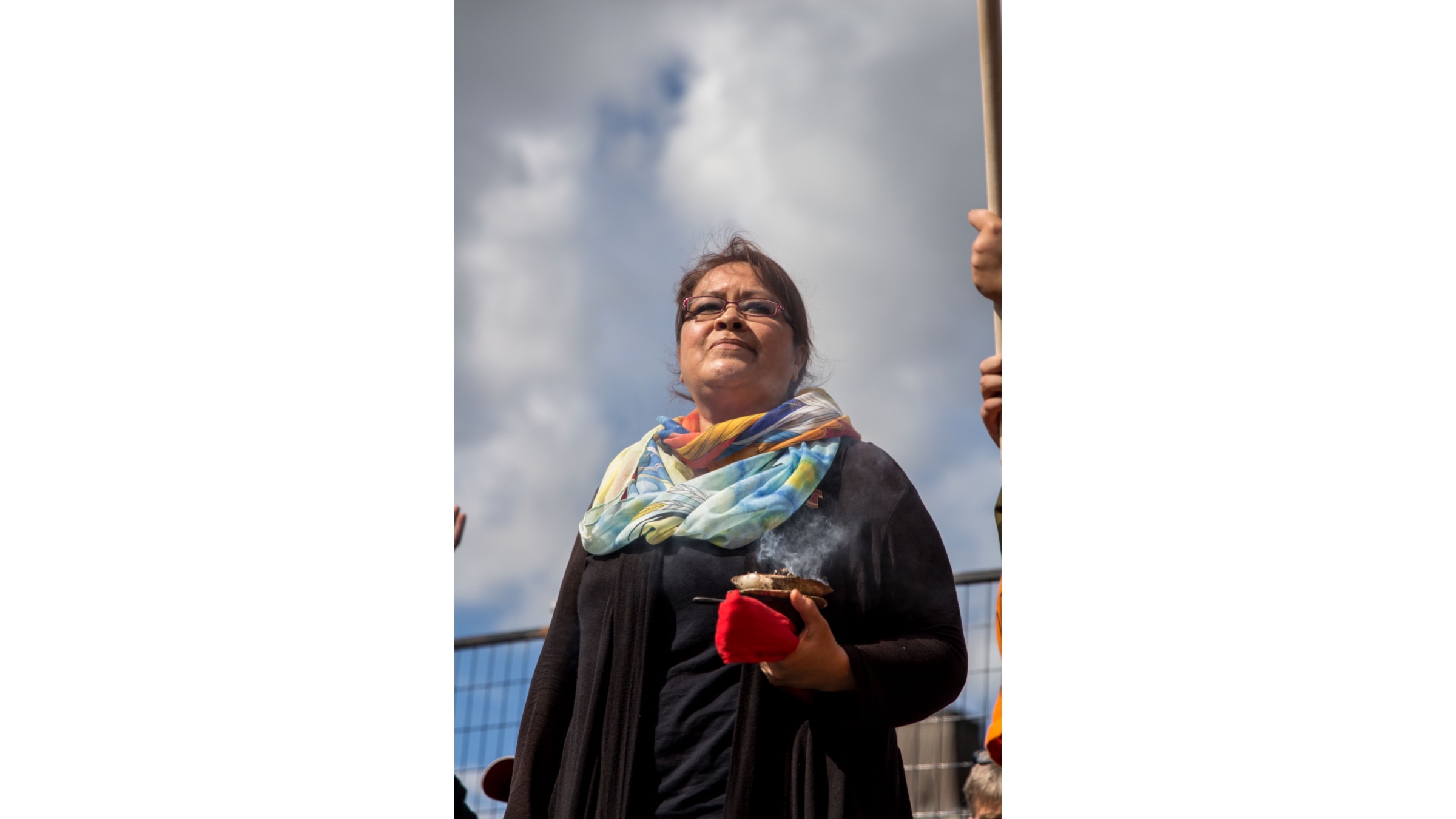A new smudging room is set to open in residence this January, amid confusion over the room’s implementation from the Indigenous committee, who say they pitched the idea.
The smudging room, currently under construction in Stormont House, will be replacing a second-floor lounge. The room was originally scheduled to open at the beginning of the 2019-20 school year.
“We’re adding cedar planks on the wall, so it’s going to take us a bit of time to get that installed,” Laura Storey, director of Carleton’s housing department, said of the room’s delayed construction. “We hope to officially open it the first week of January.”
Despite being hopeful the room will be ready to open in time, it’s far from being finished, said Rideau River Residence Association (RRRA) president Douglas Cochrane.
“So right now there’s really not much there just because they have to source everything out,” Cochrane said. “When I went over there it didn’t look like it would be good [to open] for December. I suspect in the new semester, it’ll be up and running.”
There is only one space on campus, the Ojigkwanong Centre located in Paterson Building, where students can smudge without having to fill out a pre-approval form.
One centre is quite small considering the size of the Indigenous population at Carleton, said Benny Michaud, the assistant director at Equity and Inclusive Communities (EIC) who is also in charge of the Ojigkwanong Centre, in an emailed statement.
“There are approximately 800 self-identified students at Carleton, however, we acknowledge that the number of Indigenous students we serve is much higher, as many choose not to self-identify in their application processes,” she said.
Outside of the centre, not only do Indigenous students need to submit the pre-approval forms five to 10 days in advance of smudging, but they also have to post a sign while they smudge on campus.

Wolfgang Wuttke-Stanton, an Anishinaabe student who smudges at Carleton, said the pre-approval process is “ridiculous.”
“The policy around pre-approval is ridiculous because students can pray anywhere on the campus and you don’t have to have just that one room,” Wuttke-Stanton said. “But we can’t smudge anywhere on campus, we have to have these designated places to smudge which is kind of stupid.”
Despite bureaucratic barriers, providing adequate accommodations for Indigenous students to smudge on campus is a right protected under the Ontario Human Rights Code, Carleton’s Aboriginal Co-ordinated Strategy, and the Truth and Reconciliation Commission’s Calls to Action.
“Carleton University creates an open and welcoming environment that encourages Aboriginal peoples and communities to establish a connection with and fully participate in the Carleton community,” reads Carleton’s Aboriginal Co-ordinated Strategy. “This includes cultivating a safe space for creative and critical inquiry where the shared history and separate histories of Aboriginal peoples and Canadians may be explored.”
Although Carleton is obligated to create inclusive spaces specifically for Indigenous students on campus, Indigenous students said they do not always have a lot of input in infrastructural decisions.
When asked whether Indigenous students were consulted during and before the smudging room’s construction, Storey said EIC was consulted.
“Benny Michaud is the assistant director over at Equity and Inclusive Communities and consulted with us heavily on what the room should look like,” Storey said.
Michaud said “one priority which was consistently raised” by Indigenous students to the Ojigkwanong Centre was the need for another smudging room on campus.
“In the past year there were consultation sessions held specifically for Indigenous students at Carleton, many of whom who sit on the Carleton University Indigenous Strategic Initiatives Committee (CUISIC),” Michaud said. “At these sessions, the need for such spaces was once again raised.”
However, students who sit on the CUISIC committee said they were not informed the smudging room was being implemented on campus.
“It’s good that they’re doing this and it’s good that they’re making efforts to Indigenize Carleton,” said Aliqa Illauq, an Inuit student who is a member of the CUISIC committee. “But there seems to be a lack of communication or a lack of letting the Indigenous students know exactly what is happening.”
Wuttke-Stanton, who is a member of the CUISIC committee, also said he wasn’t aware of the new smudging room until asked to provide comment by the Charlatan.
“We talked about that, like having something for residence, but I just found out a couple days ago that they’re running with it,” Wuttke-Stanton said. “I had no idea and I was on the committee and we didn’t know so I’m like, ‘Alright, what the hell?’”
“We came up with it and so the university is not really giving us our credit where credit is due,” he added. “It’s frustrating at the same time because it’s something that’s made for us and we don’t even know about it.”
Illauq and Wuttke-Stanton said there was only one person on the committee who knew about the smudging room when they asked, and they only knew because they work for EIC.
Illauq said this is not the first time Indigenous students have faced miscommunication from Carleton.
“When they want something from us, we get reached out to pretty fast and we get the information pretty fast,” Illauq said. “But when it has something to do for us, it’s like this.”
The reason Indigenous students need a room specifically dedicated to smudging in residence is because smoke would trigger the fire alarms in traditional rooms, Storey said.
“Not having a space makes me ask the question, ‘Are we supporting our Indigenous students in a way they want to be supported in their living space?’” Storey said. “Hopefully this gets us closer to a space that would support our Indigenous students.”
Michaud said the smudging room is needed not only to foster Indigenous community for Indigenous students in residence, but to make medicines more readily available.
Illauq also said the far walk to the only smudging room currently available at the Ojigkwanong Centre at night or during bad weather isn’t always safe for students, and that more space is needed to smudge.
“It’s super cramped [at the Ojigkwanong Centre],” Illauq said. “You don’t have any space.”
Wuttke-Stanton added the new smudging room, which Storey said is “pretty small” and will only able to hold about 20 people at a time, is not enough to accommodate Indigenous students.
The new smudging room may do less to combat overcrowding than anticipated, because as of right now, only self-identified Indigenous students living in residence will have access to the smudging facility, according to Storey.
“We’re still in conversation in how the space will be used and what that looks like and who gets access to it,” Storey said. “[Swipe key] is likely, where students will identify that they’re Indigenous and be allowed to use the space.”
Yet, Wuttke-Stanton said the fact that students living in residence will have to self-identify as Indigenous to access the facility is problematic.
“Self-identification and proving who you are is very tricky because you do have people who are Indigenous, but they don’t have any proof that they are Indigenous, and then you have people who are not Indigenous hold this status,” he said.
Beyond just spatial issues, Wuttke-Stanton also voiced concerns over how non-Indigenous students in the residence may react to the new smudging room because of instances in the Ojigkwanong Centre where students were yelled at for smudging.
“You have a whole bunch of people complaining upstairs or just the surrounding buildings like ‘Oh, we can smell this, like can you stop?’ and I’m like ‘No, that’s our right to do that,” he said.
Despite expressing concerns, both Illauq and Wuttke-Stanton said they believe opening a smudging room in residence is a good step forward for the university.
“It’s like we’re not out of sight, out of mind anymore sort of thing because we are here–there is a big Indigenous population at Carleton–but the general population doesn’t know,” Illauq said.
“I’m very thankful that it’s happening now, but what took so long?” Illauq added.
Wuttke-Stanton said creating a space where Indigenous students can get to know one another in residence is important because this is the first time many students will be away from their communities.
“Especially for kids who come from northern communities, when they come to a big city, they feel lost,” he said. “It’s a big culture shock and they don’t know a lot of people here, so if we have a lot of Indigenous people in one building then we have a chance for a community to connect with each other.”
When asked whether all Indigenous students will have the choice to live in Stormont House close to the smudging room, Storey said that possibility has not been discussed yet.
Indigenous students will find out if their concerns were listened to when the new smudging room opens in January.
Feature image by Jeff Pelletier.






